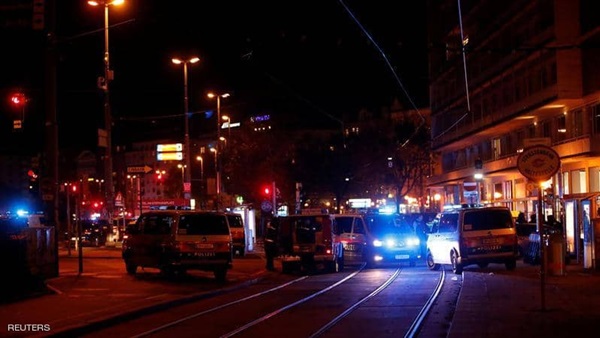Wolves of Vienna: Analysis of attack in Austria

Vienna, the capital of Austria, witnessed a major terrorist attack
that brought to mind the 2015 attacks that spread for a while throughout
Europe, as extremists carried out attacks on six different sites on Tuesday
morning, November 2, most notably in the vicinity of the country’s main Jewish
synagogue. As a result, four people were killed and dozens were injured.
For its part, the government classified the attacks as
terrorist operations belonging to Islamist extremist currents.
Interior Minister Karl Nehammer revealed that the first
perpetrator of the attack, who was killed by police forces, was named Kujtim
Fejzulai, who was sympathetic to ISIS.
According to the preliminary information available, 20-year-old
Fejzulai is of Albanian decent and has dual nationalities between North
Macedonia and Austria, in which he was born. Sky News quoted the editor of the
Austrian newspaper Walter, Florian Klink, as saying that Fejzulai was an
extremist Islamist and had been trying to travel to Syria to join ISIS.
Security failure or ideological directive
The recent attack in Austria prompted media in Austria to
accuse the government of neglecting to deal with the issue of extremists. It
seems that the security authorities considered that the perpetrators, the first
killed and the second still on the run, were unable to carry out bloody attacks
and thus allowed them to remain active even after failed attempts to join ISIS
in the Middle East.
Although Austria's membership in the European Union must
have allowed it to register extremists in a number of circles and closely
follow them for security, it is clear that the failure of dealing with
developments in the terrorist file may have played a role in this latest incident.
On the other hand, there is a burning conversation about
inter-religious hatred in Europe, especially France, which has faced a major
campaign against it after cartoons were published by Charlie Hebdo about
Muslims, while the country’s political will has complicated the crisis, which
may have contributed in one way or another to justify extremists to return to
fighting. This is apparent from the young age of the perpetrators, whether in
the attacks in Austria or France, as the ages of the perpetrators of the recent
operations ranged between 18 and 20 years old.
Preliminary analysis of Vienna attack
The attack in Vienna has brought back shooting attacks and
the carrying of automatic weapons in Europe following years of simple operations
such as stabbing or being run over. It is likely that the elements may have
exploited a security gap in Austria's defenses that allowed the obtainment and
circulation of weapons or that the extremists already have a strong
relationship with ISIS leaders. However, it is possible that terrorist outposts
already exist and may possess weapons and explosive equipment in separate
places around the country and the entire continent.
Faced with this situation, Germany has tightened its borders
with Austria, fearing that the fugitive would cross the borders between them to
take advantage of the freedom of movement in EU countries. Tight security
measures have also been taken by the Austrian authorities. On November 3, the
police carried out 18 raids in various parts of the country as part of a
widespread arrest campaign.
The variables associated with the attack parallels with the
international forces supporting terrorism, mainly Turkey, which was accused by
Austrian intelligence for managing an internal conflict in Vienna and
exploiting its relations with Islamic cultural centers to mobilize extremists
to fight in the streets, according to statements by Interior Minister Nehammer
in June.
With Austria witnessing a return of terrorism, it is likely
that matters will be re-evaluated with regard to Turkey in Europe, as well as
the centers and personalities cooperating with it that may be a hidden source
of trouble. In addition, Ankara’s previous keenness to pressure European
countries to take back ISIS elements from Turkey constitutes a dangerous
cooperation between the ideological extremists already in the country and those
loaded with combat expertise from abroad.





